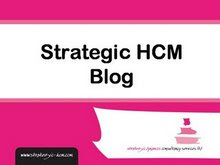
It looks like it’s going to be a good read.
However, I’ve never been completely comfortable with McAfree’s definition of Enterprise 2.0. As he explains at the start of the chapter,
“I coined the term Enterprise 2.0 to describe how these same technologies could be used on organisations’ intranets and extranets, and to convey the impact they would have on business.”
This is what’s led to a problem which continues to be associated with E2.0: that it’s all about the technology.
It’s not, or at least it shouldn’t be. (Perhaps in reference to one of McAfee’s blog posts, I should say it’s not not not about the technology???)
We need to move from a technological to a sociological perspective in our exploration of E2.0.
Take a look at the attributes McAfee ascribes to E2.0 (posted in a recent rebuttal to Gary Hamel’s suggestions for management 2.0 – incidentally a rebuttal based on the limits of technology, rather than the opportunities of sociology):
- Hamel: All ideas compete on equal footing. McAfee: No ideas are above review or commentary; there are no sacred cows within the organization.
- Contribution counts for more than credentials. Credentials are not necessary for making contributions.
- Hierarchies are natural, not prescribed. Some hierarchies are allowed to form naturally.
- Leaders serve rather than preside. Leaders expand their toolkit by using 2.0 technologies and participating in the resulting communities. They blog, tweet, join social networks, and use 2.0 technologies to show why they’ve ascended to high positions.
- Tasks are chosen, not assigned.
- Groups are self-defining and -organizing. Just as with hierarchies, some tasks and groups are self-organizing.
- Resources get attracted, not allocated. This is a tough one. Current resource allocation processes are highly hierarchical. Even when initiatives arise from emergent work, they get funded officially from the top down. It’s hard to see how to effectively change this. Ideas, anyone?
- Power comes from sharing information, not hoarding it. One way to become powerful is to share information, refine and improve it, and/or use it to connect people with each other.
- Opinions compound and decisions are peer-reviewed. Decisions are subject to peer scrutiny. In other words, the crowd has the ability to weigh in on the direction the company is taking. This is very different than giving all crowd members veto power, or even a vote. Enterprise 2.0 does not mean setting up a corporate democracy (even Wikipedia is not a democracy).
- Users can veto most policy decisions. See #9. I think and hope that individuals will have greater voice within organizations in the future, but not greater veto power.
- Intrinsic rewards matter most. Companies use 2.0 tools and approaches to tap into a wider mix of motivations – both intrinsic and extrinsic. One note here: it’s important not to confuse intrinsic vs. extrinsic with small vs. big, or monetary vs. non-monetary.
- Hackers are heroes. Dissenters are valued as long as they do two things: justify their arguments with logic and facts (or at least lay out how to test their hypotheses), and strive to be helpful to others and productive for the organization. “Everything sucks and this place is run by morons” is the stance of a sullen adolescent, not a courageous truth-teller.
Whatever we decide about the validity of Hamel’s or McAfee’s thinking, it is these attributes that are important, not the method an organisation uses to develop them – which could be web 2.0, or it could be something else.
And actually I think this list is to prescribed anyway. Some of these may be appropriate for a particular organisation and some may not.
So it’s even more useful to think about the outcomes – what does Enterprise 2.0 produce? And to me, it’s social capital – the basis for organisational Social Advantage.
It’s this that is the missing link in McAfee’s analysis so far – it’ll be interesting to see whether it’s addressed in his book or not…
.



















No comments:
Post a Comment
Please add your comment here (email me your comments if you have trouble and I'll put them up for you)